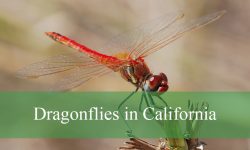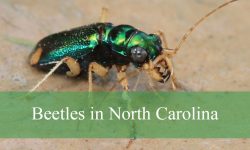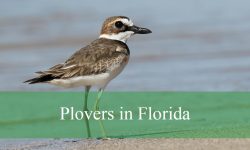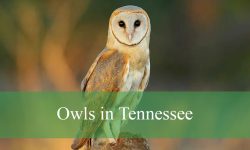Connecticut is home to three beautiful egret species that grace its wetlands, coastal marshes, and fields during warmer months. These elegant white birds are a favorite among birdwatchers for their striking appearance and graceful movements.
In this guide, you’ll find detailed descriptions and vivid pictures of the Great Egret, Snowy Egret, and Cattle Egret. Each species is unique in its size, behavior, and habitat preferences, making them fascinating to observe.
Whether exploring coastal shores or inland wetlands, this overview will help you identify these charming birds and appreciate their role in Connecticut’s diverse ecosystems.
Common Egrets Found in Connecticut
Great Egret (Ardea alba)
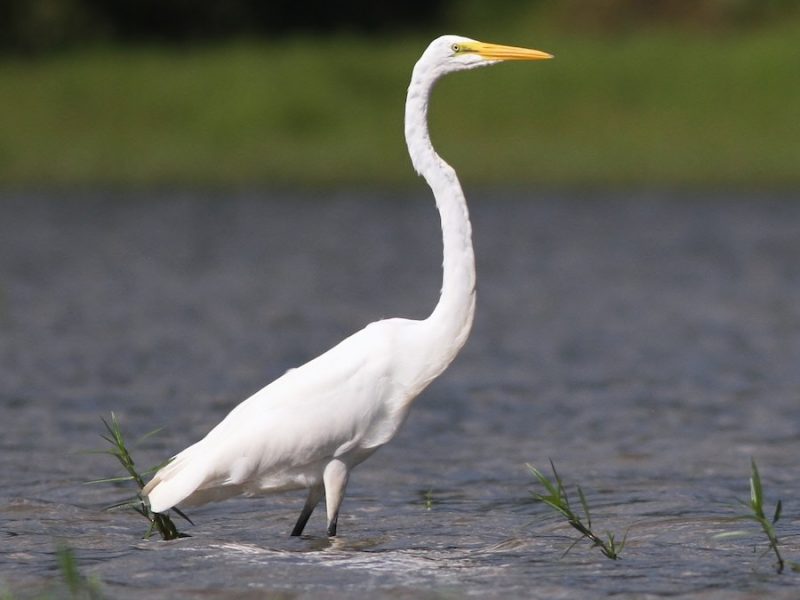
The Great Egret is a large, elegant bird easily recognized by its all-white plumage, long slender neck, and yellow bill. It has long black legs and feet, which contrast strikingly with its bright white feathers. During the breeding season, Great Egrets develop beautiful, delicate plumes called aigrettes on their backs, which were once highly sought after by plume hunters.
Measuring about 37 to 41 inches in length with a wingspan of around 52 to 57 inches, Great Egrets are among the tallest wading birds found in Connecticut. They move gracefully through shallow waters, often standing still for long periods to catch fish, frogs, and small aquatic animals with their sharp bill. Their slow, deliberate stalking behavior is a hallmark of their hunting style.
Great Egrets feed primarily on fish but will also consume amphibians, crustaceans, insects, and small reptiles. They hunt in wetlands, marshes, ponds, and along rivers, often using their long legs to wade into deeper water. Their breeding season involves building large stick nests in trees, frequently in colonies shared with other herons and egrets. Females lay 3 to 5 pale blue eggs, which both parents incubate.
In Connecticut, Great Egrets are found primarily in coastal wetlands, tidal marshes, and freshwater ponds, especially during the warmer months. They have made a remarkable comeback after being nearly wiped out by plume hunters in the early 20th century. A fun fact: their breeding plumes inspired the early conservation movement that led to the formation of the Audubon Society.
Snowy Egret (Egretta thula)
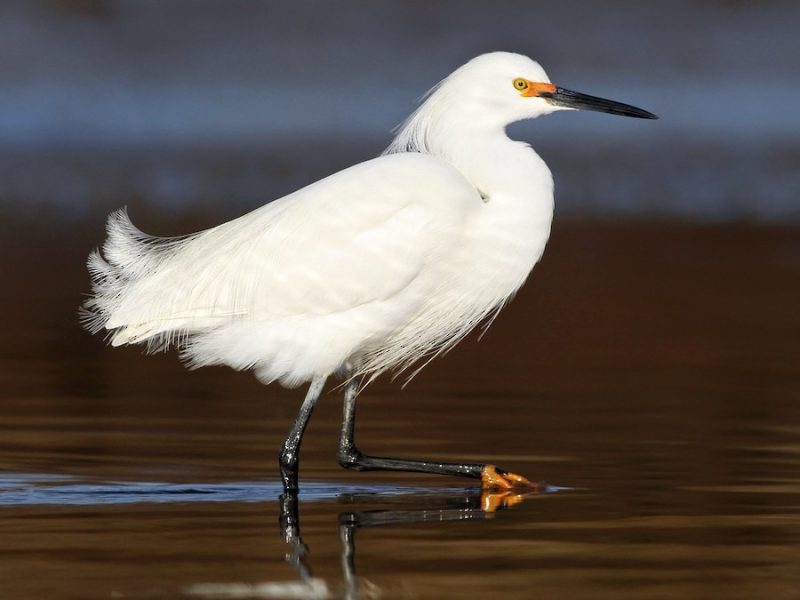
The Snowy Egret is a smaller, more delicate-looking egret with brilliant white feathers, black legs, and striking yellow feet that are often seen as “dancing” while they hunt. Its slender black bill and bright yellow lores (the area between the eye and bill) add to its distinctive appearance. During the breeding season, Snowy Egrets develop long, wispy plumes on their heads, necks, and backs.
Snowy Egrets measure about 24 to 27 inches in length with a wingspan of approximately 39 to 41 inches. They are active and graceful hunters, often seen running quickly through shallow water while flicking their feet to stir up prey such as small fish, crustaceans, and insects. Their energetic foraging behavior sets them apart from more patient wading birds.
Their diet mainly consists of small aquatic animals, including fish, shrimp, frogs, and aquatic insects. Snowy Egrets typically hunt in shallow marshes, estuaries, tidal flats, and along shorelines. They nest in colonies, often with other wading birds, building nests in shrubs or trees near water. Females lay 3 to 5 pale blue-green eggs, with both parents sharing incubation duties.
In Connecticut, Snowy Egrets are usually seen in coastal salt marshes and estuaries during the warmer months, especially in the Long Island Sound region. They are known for their graceful “foot-stirring” hunting technique and bright yellow feet, which may help flush prey. A fun fact: their yellow feet have earned them the nickname “golden slippers” among birdwatchers.
Cattle Egret (Bubulcus ibis)
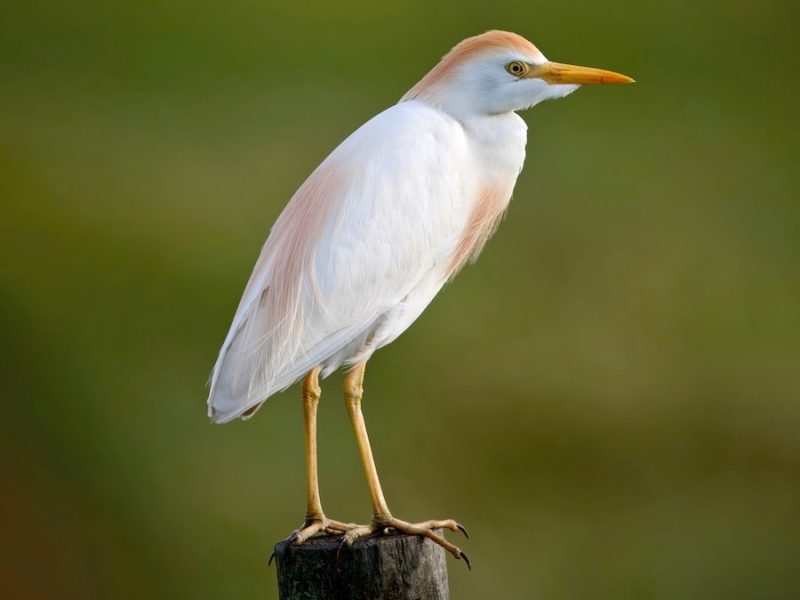
The Cattle Egret is a stout, stocky bird with mostly white plumage but shows buff or cinnamon coloring on its head, chest, and back during the breeding season. It has a yellow bill and yellow legs, making it distinct from other white egrets. Unlike other egrets, Cattle Egrets are often found far from water, associating instead with grazing animals.
Measuring about 19 to 22 inches in length with a wingspan of 37 to 41 inches, the Cattle Egret is smaller than the Great Egret but has a robust body and shorter legs. Its behavior is unique among egrets: it frequently follows cattle, horses, and other large mammals to catch insects disturbed by these animals. This symbiotic relationship benefits both the egret and the livestock.
Cattle Egrets primarily eat insects such as grasshoppers, crickets, flies, and beetles but will also consume small amphibians and reptiles. They forage mostly in grasslands, pastures, and agricultural fields rather than wetlands. Their nests are built in colonies, often in trees or shrubs near water, and the female typically lays 3 to 5 pale blue eggs.
In Connecticut, the Cattle Egret is a less common summer visitor found mainly in agricultural and open grassy areas. Its rapid expansion across North America in the last century is notable, as it originally evolved in Africa and Asia before spreading westward. A fun fact: Cattle Egrets were first recorded in Connecticut only in the mid-20th century and have since become more regular during the summer months.
FAQs About Egrets in Connecticut
What types of egrets can be found in Connecticut?
Connecticut is home to three common egret species: the Great Egret, Snowy Egret, and Cattle Egret. These birds are mostly seen in wetland areas, coastal marshes, and sometimes in nearby fields during the warmer months.
How can I identify a Great Egret?
The Great Egret is a large white bird with a long neck, yellow bill, and black legs and feet. During breeding season, it grows elegant plumes on its back. It stands taller than other egrets, with a wingspan of over 5 feet.
What distinguishes the Snowy Egret from other egrets?
Snowy Egrets are smaller with bright yellow feet and black legs. They have a slender black bill and often display wispy plumes during breeding season. Their active hunting style includes foot-stirring in shallow water.
Where are Cattle Egrets usually found in Connecticut?
Unlike other egrets, Cattle Egrets often forage in open fields and pastures alongside grazing animals rather than wetlands. They have buff-colored breeding plumage and a yellow bill and legs.
What do egrets eat in Connecticut?
Egrets mainly feed on fish, amphibians, crustaceans, insects, and small reptiles. Great and Snowy Egrets typically hunt in shallow water, while Cattle Egrets forage in grasslands for insects disturbed by livestock.
When is the best time to see egrets in Connecticut?
Egrets are mostly seen during the spring and summer months when they breed and feed in the region’s wetlands, coastal marshes, and fields. Their numbers may decline in colder months when some migrate south.
How do egrets nest and reproduce?
Egrets usually nest in colonies, often with other wading birds, building stick nests in trees or shrubs near water. Females typically lay 3 to 5 eggs, and both parents share incubation and feeding duties.
Are egrets protected species in Connecticut?
Yes, egrets are protected under federal laws such as the Migratory Bird Treaty Act. Conservation efforts help maintain their wetland habitats and protect breeding colonies from disturbance.
What is a fun fact about Great Egrets?
Their long, delicate breeding plumes were once so highly prized for hat decorations that it nearly drove the species to extinction, spurring early bird conservation movements.
Why are Cattle Egrets unique among egrets?
Cattle Egrets are unusual because they often live far from water, feeding alongside livestock in fields, and they have rapidly expanded their range across North America in recent decades.

